18 Nov
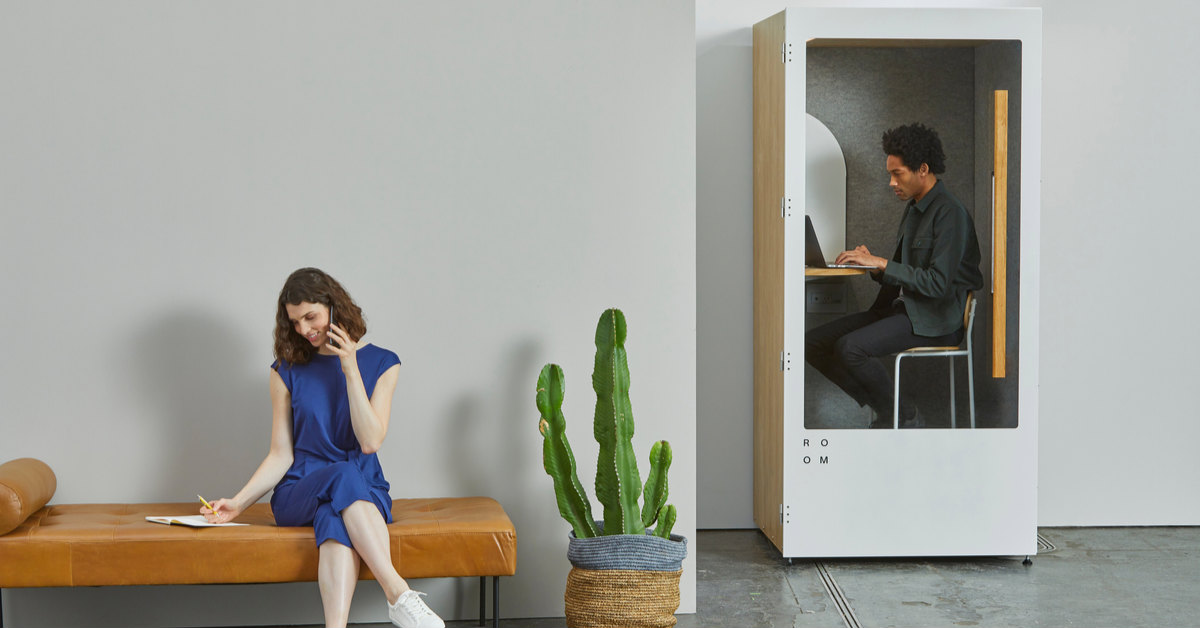
One of the most dreadful steps in a job application is picking the right resume styles — as if the job application isn’t dreadful enough!
But here’s the thing, when applying for a job, applicants need to undergo several steps to get to the final stage. But the most crucial part relies on a well-crafted, well-formatted, or well-designed resume.
Why?
That’s because a resume reflects the applicant in totality. And it doesn’t matter how prepared you are or how prominent your designation was in your previous job. If your resume gets dismissed into the pile of mediocre applicants — your skills and experience also go unnoticed.
The first thing that probably comes to mind when choosing resume styles is putting all the impressive bells and whistles. And it’s partly true. After all, applying for a job is like selling yourself to the interviewer.
However, the resume styles and formats also have subtle, if not, a direct impact. And you can choose from either of the following resume styles:
- One-page resume
- Two-page resume
- Text-heavy resume
- Design-heavy resume
- Colored resume
- Infographic resume
- Portfolio resume
- Video resume
What Important Details Should Go Into A Resume?
Regardless of what resume type you use, only include the essential information. It’s important to respect the hiring manager’s time by avoiding unnecessary details for the job you’re applying. Here’s the typical order of information in a resume:
- Contact information (Email address, mobile phone, etc.)
- Objective/overview
- List of top skills relevant for the position (hard skills)
- List of interpersonal and intrapersonal skills (soft skills)
- Educational attainment
- Employment history/Achievements/Volunteer Work
- References
Different Resume Styles to Land the Job
An applicant must not stick to one style of resume. It’s important to let your skills or experience shine, especially if you’re applying in different fields
And one resume style can’t achieve this. By creating different styles and formats, you can gauge which resume is suitable for the kind of job you’re applying.
Take inspiration from these eight different resume types to land that dream job.
One-Page Resume
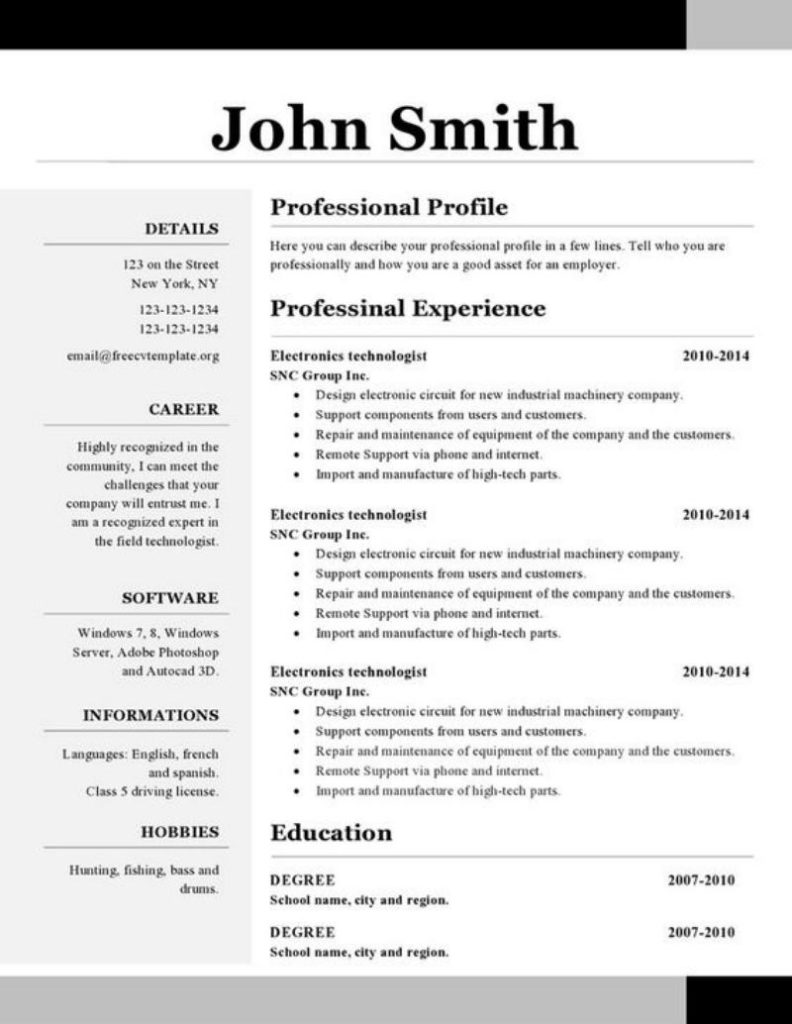
A one-page resume is one of the most traditional resumes that’s versatile for any job application. If you’re applying for a part-time or entry-level position, this resume style suits you best.
The advantage of using a one-page resume is that you only get to choose the most relevant skills and experience supposing you have more than a handful.
Two-Page Resume
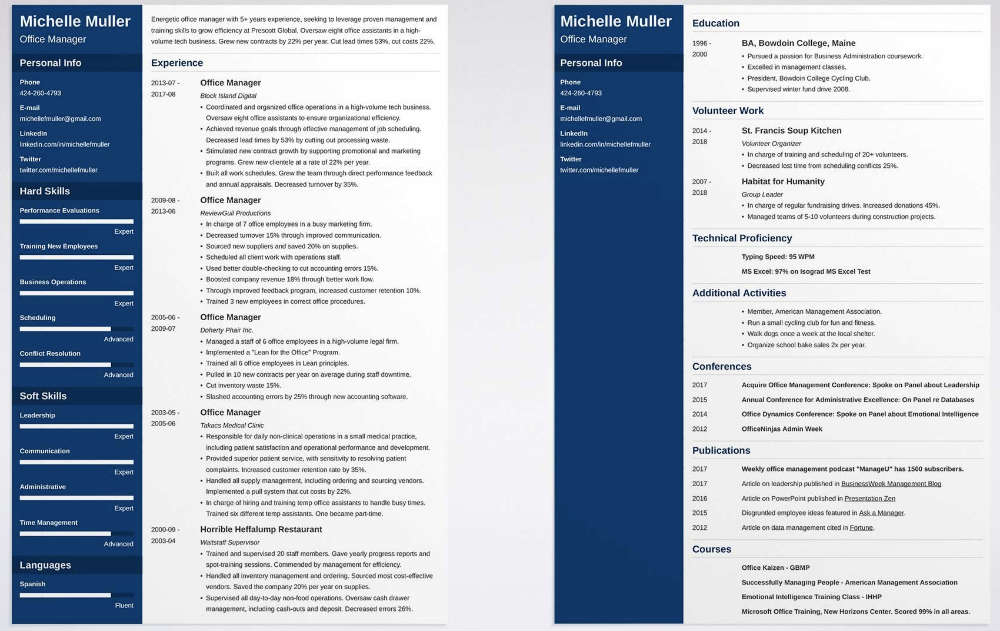
If you’re applying for a more superior position, say managerial ranks, a two-page resume creates ample space for you to showcase your skills and experience.
However, make sure that you don’t group clusters in big chunks as this will make it difficult to scan. Give each cluster enough space above and below to give it a more defined division.
To make it easy to skim through, include bullet points. Remember, the way you craft and position the details on your resume reflects your attention to detail.
Text-Heavy Resume
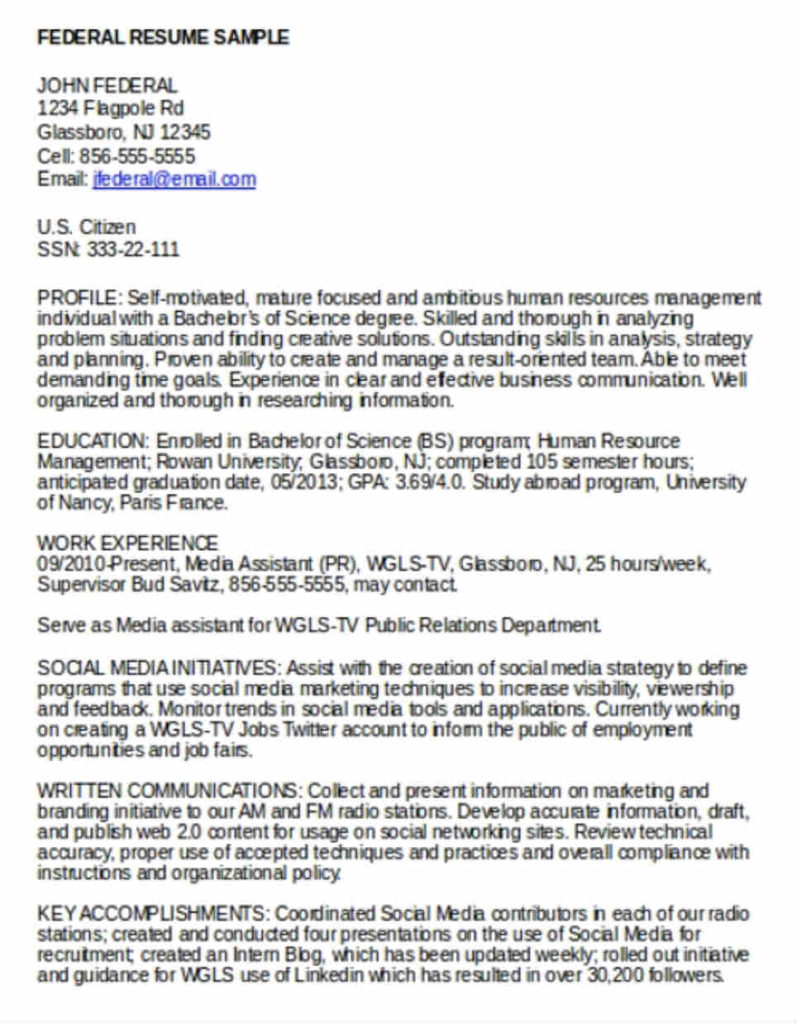
Text-heavy resume styles shouldn’t be used for all job applications. Some use these types of resumes for executive positions. Applicants who are applying for rank-and-file positions should veer from using this type of resume, especially without enough skills and experience. You don’t want to fill the entire space with wordy trimmings just to make it aesthetically pleasing.
If you are indeed applying for a senior-level or executive position, make sure to craft your sentences succinctly. You may want to avoid common filler words or prepositions, such as:
- A
- The
- To
- Of
- At
- For
- With
Make sure you don’t bury your skills in long and excessive descriptions — keep them concise.
Design-Heavy Resume
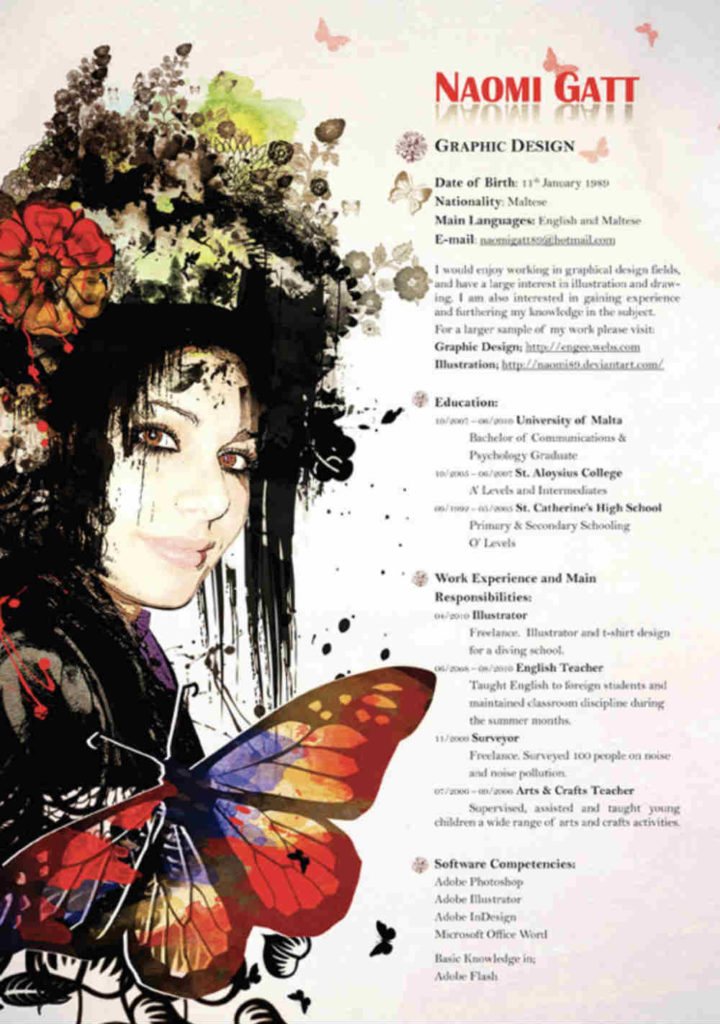
Choosing the aptest resume styles should depend on the field of work. Design-heavy resume types that are laden with fun and creativity are perfect when you’re applying for a position in the creative space.
For instance, graphic artists, animators, or videographers may show their creative expertise through a graphical resume.
On the other hand, if you’re applying for a white-collar job doing clerical work in a traditional field like finance, you’re better off avoiding graphics on your resume.
Colored Resume
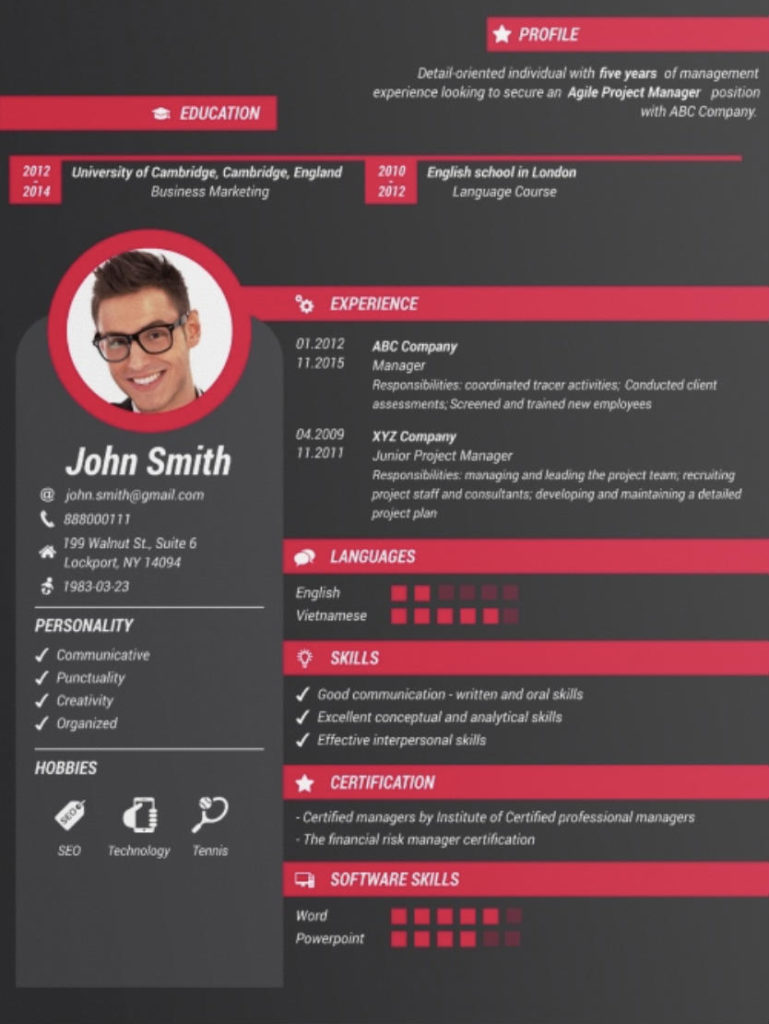
Adding colors to your resume also makes it stand out. Not only do colors make your resumes more visually appealing, but they also show your artistic side.
Resume types like this are modern and fresh as black and white were the only colors on resumes in the past. Once again, you can use colors and graphics on your resume when you’re applying in the creative field.
If you want your resume to impress, you can research the company’s logos and color palettes and use those colors for additional brownie points.
Infographic Resume
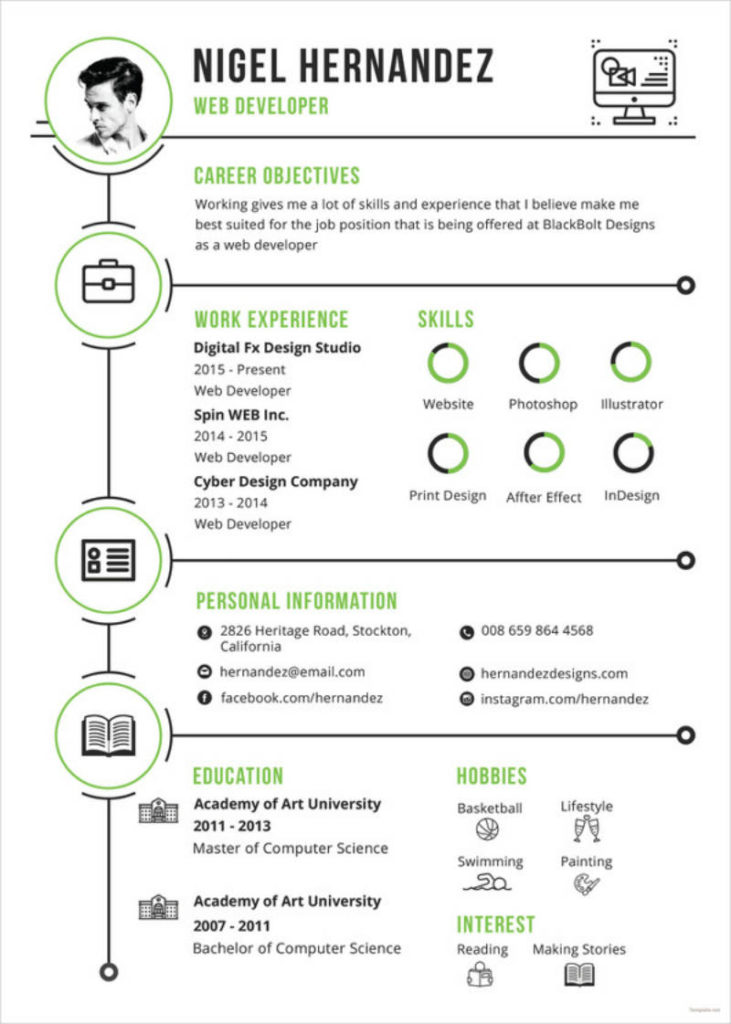
Another resume type in the creative category is infographic resumes. There’s a reason why infographics are widely used, especially in content marketing, nowadays. That’s because they’re visually appealing and they give a new light to digesting information.
Because of the varying visuals displayed like charts, graphs, and other symbols, you can make it entertaining for hiring managers to scan your resume.
Portfolio Resume
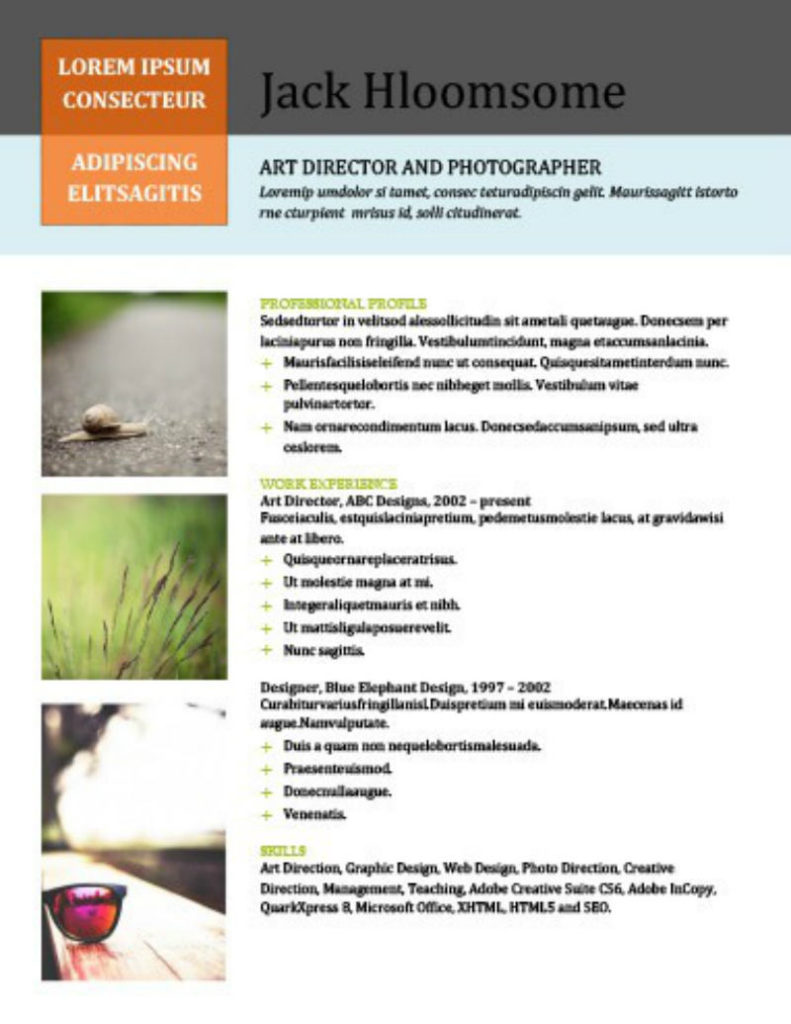
For positions surrounding arts and photography, portfolio resumes will work to your advantage. If you’re submitting a paper resume, you may do two things:
- Include images of your portfolio on the resume
- Include a link to your website
Integrating your portfolio will give you an edge over other applicants. Plus, it will allow the hiring manager to gauge your skills right off the bat. Consequently, it prevents both you and the hiring manager from wasting each other’s time.
Video Resume
Video resumes are excellent in engaging hiring managers in a playful way. You don’t have to be an actor or actress to create video resume styles. The five most essential elements of video resumes are:
- Storytelling
- Conciseness
- Specified Application
- Fun Skit
- Call to action
Video resumes are great to showcase your communication skills. So while you’re at it, lead the hiring manager to the next step through a call to action. For example, you may want to let him visit your website or professional networks.
In this sample video resume, the applicant created a scenario where she plays as both the interviewer and the interviewee. Overall, it’s entertaining yet still explaining the applicant’s skills and experiences briefly.










